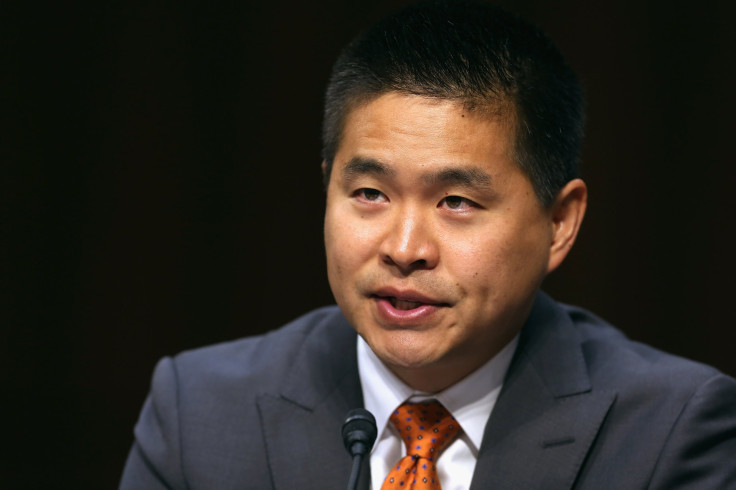High-Frequency Trading: The Investors’ Exchange (IEX) And A Potential $400 Million Hit

The U.S. Securities and Exchange Commission decisions Friday to OK the Investors’ Exchange (IEX) as a national securities exchange and revise the interpretation of the so-called order protection rule under its Regulation NMS could create a market structure benefiting some participants and costing other participants more than $400 million a year, according to one analysis of the potential effects of the SEC’s two related moves.
Since 2013, the IEX Group has been operating an alternative trading system that has been described as a way to surmount some of the high-frequency trading techniques portrayed in Michael Lewis’ controversial book “Flash Boys: A Wall Street Revolt.” The privately held company is backed by buy-side players such as the Capital Group, Fidelity Management & Research and the Vanguard Group, while drawing on the guidance of sell-side players such as Bank of America Merrill Lynch, Barclays and J.P. Morgan Securities.
(On the buy side generally are insurance companies, mutual funds and pension funds that buy large amounts of securities for money-management purposes; on the sell side generally are financial firms that sell investment services to asset-management outfits.)
A key differentiator between the newly approved IEX and other national securities exchanges such as the New York Stock Exchange, Nasdaq Stock Market and Bats BZX Exchange was blessed by the SEC in its revised interpretation of the order protection rule. The commission said it would “require trading centers to honor automated securities prices that are subject to a small delay or speed bump when being accessed.” IEX’s so-called speed bump of 350 microseconds is within the 1 millisecond now allowed by the SEC.
Back in March when the SEC was still considering the IEX application to become a national securities exchange, Charles M. Jones, a professor of finance and economics at Columbia University in New York, told the commission in a comment letter that “the IEX 350-microsecond delay is applied in a discriminatory fashion. It provides advantages to undisplayed orders on IEX, thereby disadvantaging IEX displayed orders and orders placed at other exchanges.” According to the professor:
“By analyzing recent order flow data at other exchanges, I find that this speed bump is far from de minimis. It would come into play around 15 percent of the time. When it does come into play, the delay provides an average discriminatory impact of 1.67 cents per share, or 4.3 basis points, which is economically large relative to average bid-ask spreads.”
Jones argued: “The main problem is that IEX’s proposed market structure applies this speed bump selectively. This provides advantages to certain types of market participants at the expense of others.” He contended, “The total dollar amount of these effects would ultimately depend on IEX’s market share.” Employing certain assumptions derived from his study of equity trading during the week of Nov. 2, 2015, however, he estimated these impacts could be more than $400 million a year.
Accordingly, Jones said, “An exchange market structure that provides an annual subsidy of over $400 million to its dark liquidity providers will materially impact all other market participants and exchanges.”
Of course, this estimate has been disputed by others, such as Sal Arnuk and Joe Saluzzi, co-founders and partners at Themis Trading in Chatham, New Jersey, whose company is one of IEX’s advisers on the sell side.
Addressing the SEC in their own comment letter responding to Jones’ estimate, Arnuk and Saluzzi raised multiple questions about the professor’s work before concluding: “There will never be a perfect trading system that makes trading ‘fair’ for all market participants at all times. ... However, is there not room in the [Securities] Exchange Act (and in the commission’s thinking) allowing for free market competition, where an alternative is proposed that tilts the ‘fairness’ towards investors instead of the fastest intermediaries?”
Meanwhile, those for and against the IEX concept of a speed bump in trading likely would agree with Jones on at least one thing, namely, that the new exchange’s market share will be key in determining whether the professor’s estimate of an effect of more than $400 million is either in the ballpark or close to it. In its new role as an exchange, IEX will begin a symbol-by-symbol rollout Aug. 19 and end it Sept. 2, when it should be fully operational, according to Bradley Katsuyama, CEO and president of the New York-based IEX Group.
Therefore, it will become increasingly interesting around Labor Day to see whether IEX’s daily market share, bouncing between 1.2 percent and 1.8 percent this month, shows signs of significant growth.
© Copyright IBTimes 2024. All rights reserved.





















